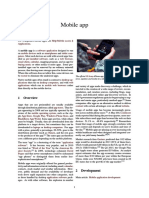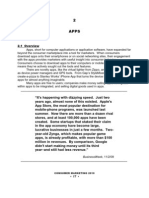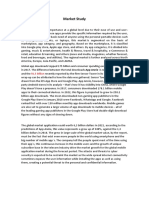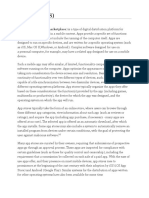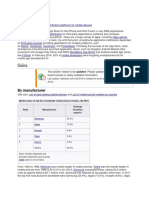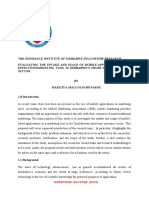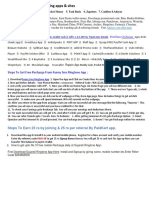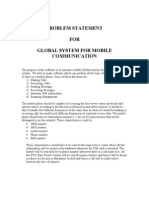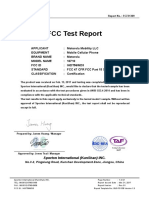0% found this document useful (0 votes)
43 views1 pageThe Official Iphone App Presents The Service'S Technology News, Updates and Media in A Single Place
Mobile apps were originally for productivity and information but expanded to other categories as developer tools improved. There are now official app stores operated by mobile OS owners like Apple and Google where most apps are downloaded, though some can also be installed manually. While some apps are free, others require purchase, with app owners receiving a percentage of the purchase price after platform fees. The mobile app market has grown rapidly, with billions of apps downloaded and billions of dollars generated annually.
Uploaded by
Dorin GribinceaCopyright
© © All Rights Reserved
We take content rights seriously. If you suspect this is your content, claim it here.
Available Formats
Download as DOCX, PDF, TXT or read online on Scribd
0% found this document useful (0 votes)
43 views1 pageThe Official Iphone App Presents The Service'S Technology News, Updates and Media in A Single Place
Mobile apps were originally for productivity and information but expanded to other categories as developer tools improved. There are now official app stores operated by mobile OS owners like Apple and Google where most apps are downloaded, though some can also be installed manually. While some apps are free, others require purchase, with app owners receiving a percentage of the purchase price after platform fees. The mobile app market has grown rapidly, with billions of apps downloaded and billions of dollars generated annually.
Uploaded by
Dorin GribinceaCopyright
© © All Rights Reserved
We take content rights seriously. If you suspect this is your content, claim it here.
Available Formats
Download as DOCX, PDF, TXT or read online on Scribd
/ 1


